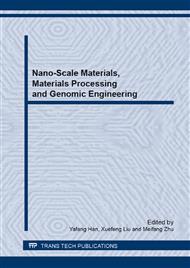p.362
p.370
p.377
p.384
p.391
p.396
p.403
p.409
p.415
Investigation on the Micro-Structures and Properties of the P20 Steel Surface after Electrical Discharge Machining
Abstract:
Electrical Discharge Machining (EDM) is the machining technique of discharging corrosion of the material surface. The effect of the EDM pulse current on the micro structure and properties of the P20 specimen surface were investigated. Three layers were observed on the specimen surface after discharging: ablation layer, molten layer and recrystallized layer. The experimental results show that with the increment of the pulse current, the thickness of the molten layer and recrystallized layer increased. The contents of the oxygen and carbon on the outside of the molten layer were higher than the base metal for the diffusion during the machining. The micro hardness reduced from the out layer to the base metal after the heat treatment, indicating the mechanical properties changing of the machining surface. In the molten layer, micro fracture is caused by the residual thermal stress during the machining.
Info:
Periodical:
Pages:
391-395
Citation:
Online since:
April 2014
Authors:
Price:
Сopyright:
© 2014 Trans Tech Publications Ltd. All Rights Reserved
Share:
Citation:


